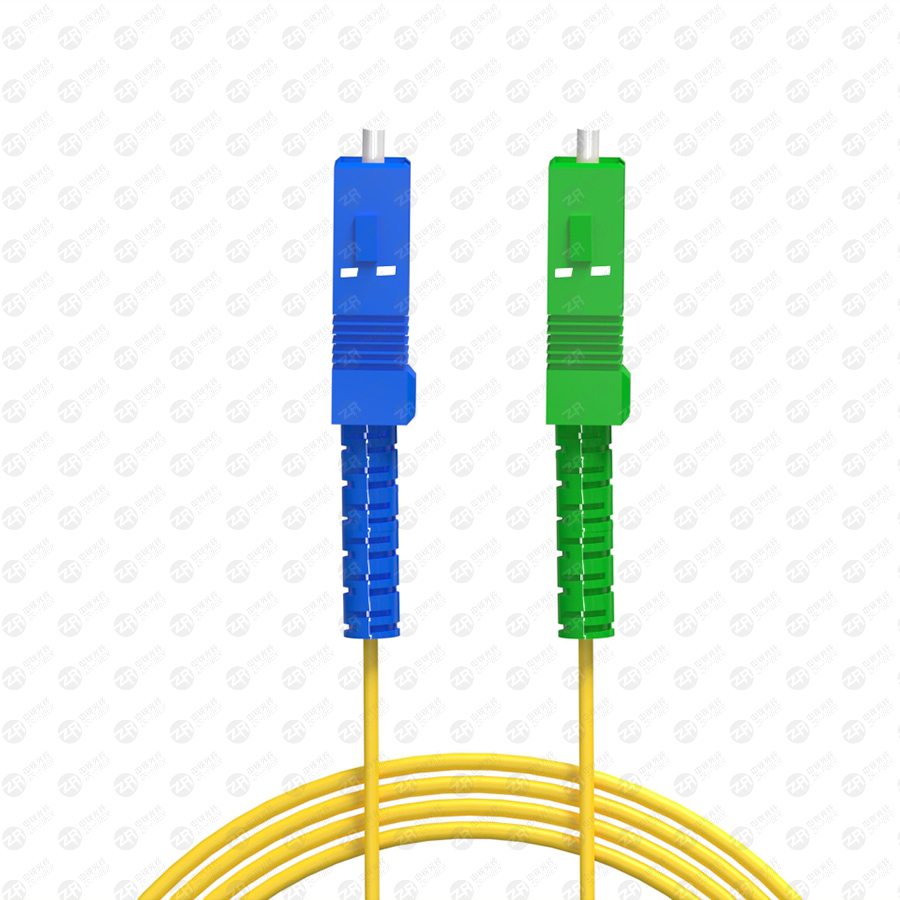- Sales SupportContact Sales
- Call us at: +(86) 15211074652
- Send us a email at: info@zr-fibercable.com
Single -mode Gigabit Optical Fiber Jumping Line
Single-mode gigabit optical fiber jumping line, also known as patch cords, are fiber optic cables used to connect two devices in a network. These patch cords are used to provide a quick and easy way to make connections between devices, such as switches, routers, and servers, in data centers and telecommunications networks. Single-mode patch cords are used to transmit data at high speeds over long distances.
Single-mode fiber optic cables are designed to transmit a single beam of light over a long distance. The core of a single-mode fiber is much smaller than that of a multi-mode fiber, which allows for higher data transmission rates and longer distances. Single-mode fibers are typically used in long-haul telecommunications networks and other applications where high bandwidth and low attenuation are required.
The structure of a single-mode gigabit optical fiber jumping line includes several components, including the core, cladding, coating, and connectors. Let's take a closer look at each of these components:
Core:
The core of a single-mode fiber is typically 8-10 microns in diameter, which is much smaller than the core of a multi-mode fiber. The small core size allows for a single beam of light to be transmitted over a long distance, which results in higher data transmission rates and lower attenuation.
Cladding:
The cladding is a layer of glass that surrounds the core of the fiber. The cladding is designed to reflect light back into the core, which helps to prevent signal loss and ensure that the signal is transmitted over long distances.
Coating:
The coating is a layer of protective material that is applied to the cladding to protect the fiber from damage. The coating also helps to provide additional strength to the fiber and prevents bending or twisting.

Connectors:
Connectors are used to connect two fiber optic cables together. They are typically made of ceramic or metal and are designed to ensure that the fiber ends are properly aligned. The connectors used in single-mode gigabit optical fiber jumping lines include SC, LC, and FC connectors.
SC Connector:
SC (Subscriber Connector) connectors are one of the most common connectors used in single-mode fiber optic patch cords. The connector is a square-shaped push-pull connector that is easy to install and remove. The connector features a 2.5 mm ferrule, which allows for low insertion loss and high return loss.
LC Connector:
LC (Lucent Connector) connectors are another common connector used in single-mode fiber optic patch cords. The connector features a 1.25 mm ferrule, which is half the size of the SC connector. This allows for higher connector density in patch panels and other high-density applications.
FC Connector:
FC (Fiber Connector) connectors are also used in single-mode fiber optic patch cords. The connector features a screw-on design, which ensures a secure connection. The connector features a 2.5 mm ferrule, which provides low insertion loss and high return loss.
Single-mode gigabit optical fiber jumping lines are available in a variety of lengths and colors. The length of the patch cord is important, as it determines the maximum distance that data can be transmitted between two devices. The color of the patch cord is used to identify the type of connector that is used on each end of the cable.
In conclusion, single-mode gigabit optical fiber jumping lines are an essential component in data centers and telecommunications networks. They are designed to transmit data at high speeds over long distances and are made up of several components, including the core, cladding, coating, and connectors. The connectors used in single-mode gigabit optical fiber jumping lines include SC, LC, and FC connectors, which are all designed to ensure a secure and reliable connection between devices.
You might be interested in
We use cookies to ensure that we give you the best experience on our website. By clicking on "Accept" or continuing to use this site, you agree to our use of cookies in accordance with our Cookie Policy .You can refuse the use of cookies here.
Accept

